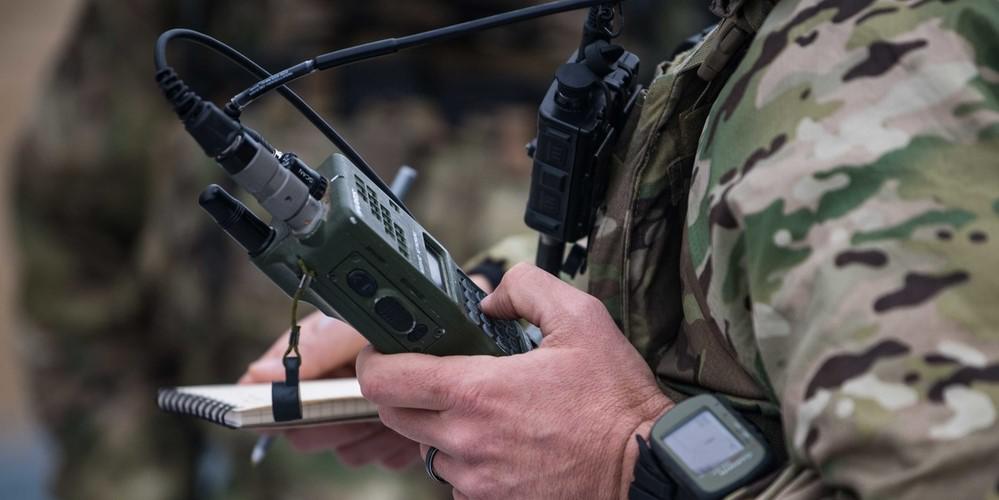It’s Go Time for JADC2
The U.S. Defense Department is poised to advance its joint all-domain command and control (JADC2) vision with an array of major accomplishments in the coming months. Those achievements include the completion of an implementation plan, a practical demonstration of JADC2 capabilities, the fielding of initial technology and a series of briefings to allies.
Charleen “Char” Laughlin, JADC2 Division lead and JADC2 deputy cross-functional team lead, Joint Staff, and Stuart Whitehead, deputy director-South, Joint Staff J-6, both agree the implementation plan could be completed by year’s end, possibly in November. The document could be delivered to the vice chairman of the Joint Chiefs of Staff as early as next week before going to the deputy secretary of defense. “I would say it’s like 90 percent written. It’s still, obviously, in a draft form pending final approval,” Whitehead reports.
Department officials have completed a host of critical JADC2 documents, including a JADC2 strategy. But the implementation plan is the most significant so far, Whitehead suggests. “I think this will be probably the most important document because it identifies the tasks to be accomplished and who’s responsible for each task. This will be a good way to understand the totality of the JADC2 effort and then from there we’ll see how it progresses.”
The next step, Whitehead says, is “largely a question of orchestration” and “recursive coordination” to ensure progress or to adjust as necessary.
The Defense Department also is holding a practical demonstration in early November of some JADC2 capabilities in conjunction with the Bold Quest exercise. Some of those capabilities also could be fielded soon.
The demonstration will include the United States and forces in the United Kingdom sharing information using the secret-and-below releasable environment (SABRE). “Keep in mind JADC2 begins with coalition partners, so as much as we can, we’re really trying to make sure that we start there first,” Whitehead notes. “We’re going to have elements reaching out from Europe. That is the capability that becomes your warfighting information sharing environment that can be created on the fly or sustained indefinitely depending on which echelon you’re dealing with,” Whitehead explains.
The demonstration also will include U.S. Central Command’s information sharing environment and will represent a transition from the traditional network-centric approach to JADC2’s datacentric approach. “It’s also going to be a demonstration that shows the hybrid nature of communications, at least for the near term, where we know that we’ll still be operating in a netcentric environment while transitioning to a datacentric environment,” Whitehead explains. “So, you’re going to see lessons learned about how that hybrid solution works and what considerations you have to make depending on who your partner is, what equipment they’re bringing and what your architecture is for your mission.”
Department officials already have “learned quite a bit about datacentricity through these practical activities where we know that we have to create new and different instructions when it comes to all the data management aspects of JADC2,” he adds. “This is a learn-as-you-go activity, but I think it’s going to be pretty useful for expressing and demonstrating to others what it takes to get the job done.”
The SABRE capabilities to be demonstrated have been developed by the Secretary of the Air Force Administrative Assistant Mission Partner Capabilities Office and likely will be fielded very soon. “They have several versions, which means we can actually do distributed, 24/7 development operations with partners over our Combined Federated Battle Laboratories Network. This is a way for us to make sure that, as we’re developing the capabilities with our partners, it will deliver what we like,” Whitehead says.
Whitehead notes that modern military operations require the cooperation of multiple combatant commands, or COCOMs. “You really have to enable the ability of multiple COCOMs to share and to perform operations collaboratively and collectively,” he explains. “What JADC2 provides—I want to say this is our objective—is this common infrastructure that allows for the sharing of information, access to applications and collaboration between multiple COCOMs and with mission partners, whoever they may be. That’s really the target.”
In addition to other pending accomplishments, Defense Department officials will continue briefing various allies on JADC2’s benefits and the progress being made. “We presented JADC2 to the NATO C3 [Consultation, Command and Control] board in the spring. We’ve gotten requests subsequent from that engagement to do other briefings to NATO,” Whitehead reports. He adds that NATO’s military committee has requested a briefing, which may happen next month.
Additionally, he intends to brief NATO officials during this week’s NATO Allied Command Transformation’s next Think-Tank for Information Decision and Execution Superiority (TIDE) Sprint event and that U.S. officials have conducted bilateral and multilateral briefings as well.
Whitehead points out that JADC2 is not just about warfighting. “Keep in mind JADC2 is just as important for things like humanitarian assistance and disaster relief as it is for combat operations. I don’t want to give the impression that we’re thinking just about combat operations. It’s much broader than that,” he concludes.





Comment
Thank you
Thank you
Comments